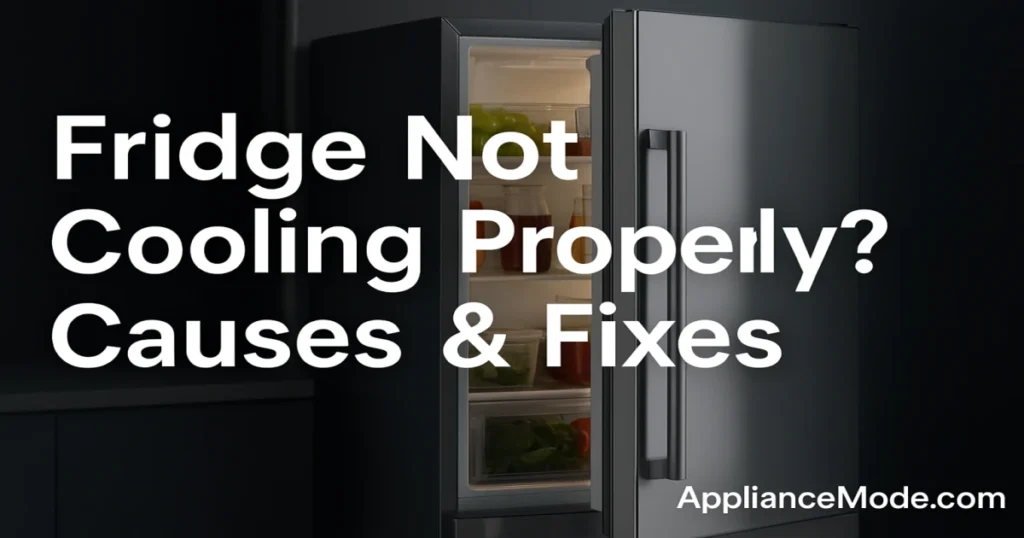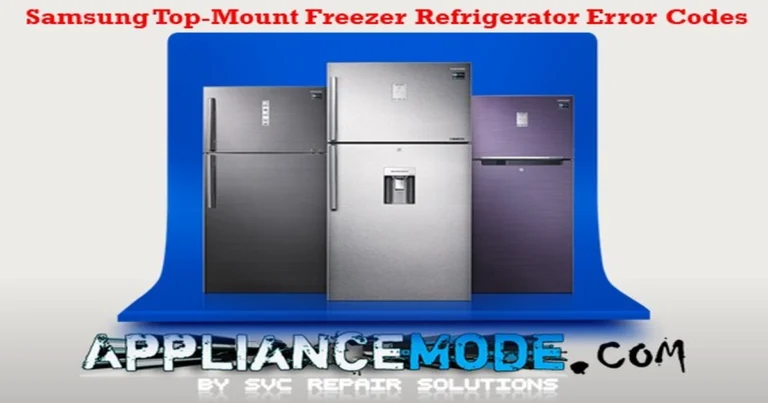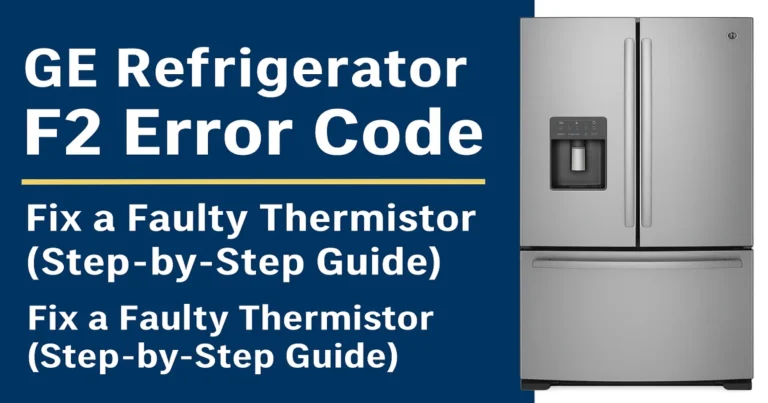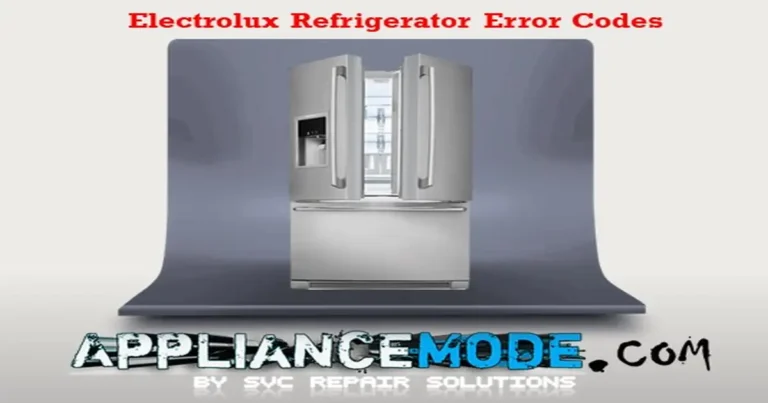When your refrigerator stops cooling, it can quickly turn into a costly problem if food spoils. A fridge that isn’t cooling properly doesn’t always mean it’s time for a replacement—often, the issue comes from a part that’s failing or a maintenance task that’s overdue.

In this guide, we’ll cover the common causes, troubleshooting steps, and repair tips for a refrigerator that isn’t cooling effectively.
Common Causes of a Refrigerator Not Cooling
- Dirty Condenser Coils
- Dust and debris on the coils prevent proper heat exchange.
- Clean the coils with a vacuum or brush every 6–12 months.
- Faulty Evaporator Fan Motor
- If the fan isn’t running, cold air won’t circulate inside the fridge.
- Listen for unusual noises or silence when the door is open.
- Defective Condenser Fan Motor
- This fan cools the compressor. If it fails, the fridge may run warm.
- Temperature Control Thermostat Problems
- If the thermostat is stuck or broken, it won’t signal the compressor to cool.
- Malfunctioning Start Relay or Capacitor
- These components help the compressor start. If defective, the fridge won’t cool.
- Blocked Air Vents
- Overpacked food or ice buildup can block airflow between compartments.
- Low Refrigerant (Sealed System Issue)
- If there’s a refrigerant leak, only a licensed technician can repair it.
Troubleshooting Steps
- Check the Temperature Settings: Ensure the fridge is set to 37–40°F (3–4°C) and the freezer to 0°F (-18°C).
- Inspect Coils and Fans: Clean coils and confirm fans are running.
- Listen for the Compressor: A silent compressor may indicate a start relay or control issue.
- Check Door Seals: Worn or broken gaskets let cold air escape.
- Avoid Overloading: Keep air vents clear to allow proper circulation.
Preventing Cooling Issues
- Clean condenser coils regularly.
- Avoid overstuffing your fridge.
- Check and replace door seals if worn.
- Schedule annual maintenance for peace of mind.
Key Takeaway
A fridge not cooling properly is often caused by dirty coils, faulty fans, or airflow issues. Start with simple fixes before moving to complex repairs. If problems persist, seek professional service to protect your food and your fridge.
Summary Table: Fridge Not Cooling Properly
| Cause | Symptoms | DIY Fix | When to Call a Pro |
|---|---|---|---|
| Dirty Condenser Coils | Warm fridge, compressor runs constantly | Clean coils with vacuum/brush | – |
| Faulty Evaporator Fan Motor | No cold air circulation, unusual noises | Check if fan spins when door is open | Replace motor if defective |
| Defective Condenser Fan Motor | Compressor overheats, fridge not cooling | Inspect fan near compressor | Replace fan if not running |
| Thermostat Issues | Fridge not reaching set temperature | Adjust/replace thermostat | If unresponsive after replacement |
| Start Relay or Capacitor Failure | Compressor not starting, clicking sound | Test with multimeter | Replace component or compressor |
| Blocked Air Vents | Uneven cooling, ice buildup, warm spots | Rearrange food, clear ice | – |
| Low Refrigerant / Leak | Fridge runs but no cooling | – | Licensed technician required |
| Damaged Door Seals | Warm air leaks, condensation | Inspect and replace gaskets | – |

I am a master Appliance Repair technician with over 35 years of experience in the field. I am passionate about helping people troubleshoot their appliances and fix common problems. My website, appliancemode.com, provides a wealth of information on troubleshooting common appliance issues and deciphering error codes. This website aims to empower people to tackle appliance repairs themselves and save money on service calls.



